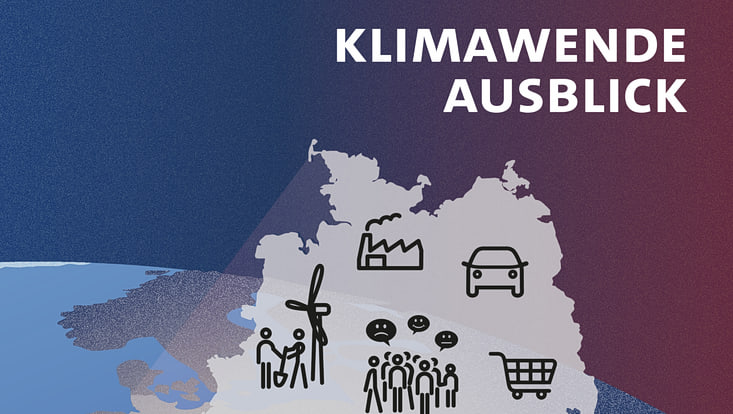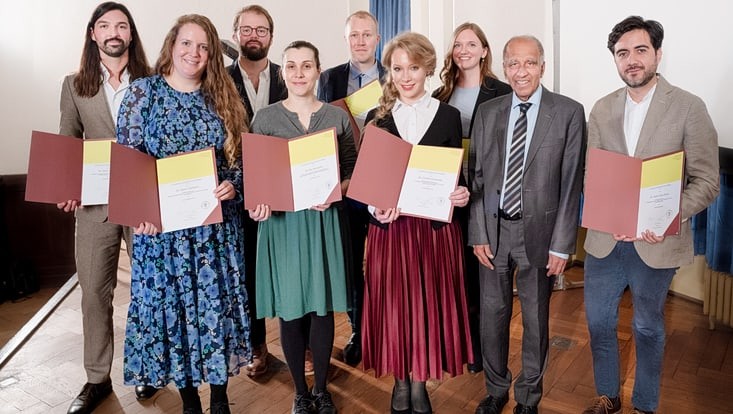and Society (CLICCS)
Why Logging is Climate Protection
7 April 2022, by Stephanie Janssen

Photo: E. Neuhaus/unsplash
How can forests most effectively contribute to climate protection? The forestry management researcher Leam Martes and Professor Michael Köhl from Universität Hamburg’s Cluster of Excellence for climate research CLICCS have shown that more carbon could be stored if more wood products were manufactured – replacing materials that take considerable CO2 to produce. But this conflicts with the nature conservation goals set by the European Union.
The new EU regulations have contradictory goals. On one hand, as much forest as possible is to be protected. After all, if no trees are felled, the carbon (C) remains in the forest and biodiversity is better protected. But at the same time, in the future, products made of wood are to replace those made of materials that take considerable climate-harmful emissions to produce. In this scenario, though trees are felled, the carbon they contain is nevertheless stored on a long-term basis, e.g. in houses or furniture. A new study shows that this approach removes significantly more CO2 from the atmosphere.
In concrete terms, Leam Martes and Michael Köhl assessed data on forests in 19 districts in and around Hamburg. Information on the tree types, sizes and densities can be used to gauge each forest’s carbon content. Using a specially designed computational model, the researchers then analyzed various forestry management options; for six scenarios – ranging from complete natural conservation with no logging, to 100 percent logging – they calculated how much carbon could be stored within and beyond the forests through the year 2100.
In brief: if all climate-relevant services provided by forests are considered, intensive logging would store the most carbon and therefore produce the best climate balance. Wood products can replace those made of steel, aluminum or plastic, which are currently produced using energy- and CO2-intensive processes. For example, making a steel door produces more than one and a half times as much CO2 as a wooden door, and using steel beams in construction produces nearly two and a half times as much as wooden beams – depending on the products’ longevity. Further, burning wood is a more sustainable way of producing energy than burning fossil fuels: since the wood previously absorbed CO2 from the atmosphere, the CO2 balance remains zero.
“We have to record climate protection where it actually happens,” says Leam Martes. “Today, firms can claim to use climate-friendly heating if they burn wood instead of petroleum. But where was the wood produced, and therefore CO2 was removed from the atmosphere? In the forest. Accordingly, to be fair, it should have a positive effect on the forest’s balance.” But it doesn’t, since the carbon balance is frequently only considered within forests, which means logging is recorded as a loss. As a result, preserving forests is portrayed as an effective climate protection measure, while logging to manufacture wooden products is viewed negatively.
For example, the climate plan in the EU’s biodiversity strategy for 2030 calls for protecting at least ten percent of the land area in all member countries. For Germany this would mean having to protect roughly 40 percent of its forests, since it lacks alternative areas. But doing so would deprive us of an important instrument for climate protection, since logging would be prohibited there. The new study outlines a climate-friendly compromise: all old forests, with trees more than 120 years old, would be protected – roughly 13 percent of all forests in Northern Germany. Using logging in the remaining woods could then lastingly remove millions of metric tons of additional CO2 from the atmosphere.
Publication:
Martes LM, Köhl M (2022): Improving the contribution of forests to carbon neutrality under different policies – a case study from the Hamburg metropolitan area; Sustainability, 14/4
Contact:
Leam Martes
Cluster of Excellence "Climate, Climatic Change, and Society" (CLICCS)
Universität Hamburg
+49 40 73962 160
leam.mykel.martes@uni-hamburg.de
Stephanie Janssen
Public Outreach
Center for Earth System Research and Sustainability (CEN)
Cluster of Excellence"Climate, Climatic Change, and Society" (CLICCS)
Universität Hamburg
+49 40 42838 7596
stephanie.janssen@uni-hamburg.de


